Penske Racing
| Owner(s) Name(s) | Roger Penske |
| Racing Series | Sprint Cup, Nationwide Series, IRL IndyCar Series, American LeMans, ARCA |
| Number of Championships | 0 (Sprint Cup Series), 1 (IndyCar Series), 10 (CART) |
| Car Number(s) | #3, #6 (IRL) #2, #12, #77 (Sprint Cup Series) #12 (Nationwide Series) #6, #7 (American Le Mans) #27 (Automobile Racing Club of America) |
| Driver(s) | Kurt Busch (#2-Sprint & #12 Nationwide) Ryan Newman (#12-Sprint & Nationwide) Sam Hornish, Jr. (#77-Sprint & #12 Nationwide) Hélio Castroneves (#3-IRL) Ryan Briscoe (#6-IRL) Billy Wease (#27 ARCA) Sascha Maassen (#6-ALMS) Patrick Long (#6-ALMS) Emmanuel Collard (#6-ALMS) Romain Dumas (#7-ALMS) Timo Bernhard (#7-ALMS) |
| Primary Sponsor(s) | Miller Lite (#2) Alltel (#12) Mobil Oil (#77-NEXTEL, #3, #6-IRL) Kodak (#12-NEXTEL, #27-ARCA) DHL (#6, #7-ALMS) |
| Shop Location | Mooresville, North Carolina |
| Homepage | http://www.penskeracing.com/ Penske Racing Homepage |
Penske Racing is a racing team that competes in the Indy Racing League, ALMS, and NASCAR. They also previously competed in road racing, Formula One and CART. Penske Racing is a division of Penske Corporation, and is owned and chaired by Roger Penske. The team president is Tim Cindric.
Contents[hide] |
CART IndyCar World Series/IRL IndyCar Series
Penske has been involved with IndyCar racing since 1968, when they first fielded a stock block-powered Eagle with Mark Donohue. The team first competed at Indianapolis in 1969, and within three years had become the team to beat, winning the race with Donohue in 1972. In 1978, Roger Penske along with Pat Patrick, Dan Gurney, and several other team owners who had been participating in USAC events involving cars known as Champ Cars and IndyCars formed Championship Auto Racing Teams (CART). As of 2006, Penske Racing has won the Indianapolis 500 14 times, won the Indianapolis 500 pole position 14 times, as well as 124 open wheel wins in CART and IRL and 11 open wheel championships.
In 2001, Team Penske marked its return to Indy 500 after a five year absence due to the open wheel split after the 1995 CART IndyCar World Series. Later in 2001 Roger Penske announced he would leave CART for the IRL IndyCar Series.
Team Penske currently fields two cars, driven by Hélio Castroneves and Ryan Briscoe. Castroneves has won the Indianapolis 500 twice (2001 and 2002), as well as other CART and IRL races with Team Penske. Sam Hornish, Jr. is the 2006 Indianapolis 500 winner and the (2001, 2002, and 2006) IndyCar Series Champion, with 16 IndyCar Wins. His 2001 and 2002 championships were with Panther Racing, prior to joining Team Penske.
The open-wheel racing portion of Penske Racing had been based in Reading, Pennsylvania since 1973 with the cars, during the F1 and CART era, being constructed in Poole, Dorset, England as well as being the base for the F1 team.[1][2] On October 31, 2005, Penske Racing announced after the 2006 IRL season, they will consolidate IRL and NASCAR operations at the team's Mooresville North Carolina facility [2]; with the flooding in Pennsylvania in 2006, the team's operations have been moved to Mooresville earlier than expected.
Also in late 2005, Team Penske announced primary sponsor Marlboro, which had been a sponsor with Team Penske since the 1989 Indianapolis 500, and primary sponsor of all Team Penske IndyCars since 1991, would not appear on the cars any longer in accordance with the MSA. Since 2007, the IndyCar Series cars have carried "Team Penske" insignia and joint sponsorship from Mobil 1 and Kodak.
Indianapolis 500 Victories
- 1972 Mark Donohue
- 1979 Rick Mears
- 1981 Bobby Unser
- 1984 Rick Mears
- 1985 Danny Sullivan
- 1987 Al Unser
- 1988 Rick Mears
- 1991 Rick Mears
- 1993 Emerson Fittipaldi
- 1994 Al Unser, Jr.
- 2001 Hélio Castroneves
- 2002 Hélio Castroneves
- 2003 Gil de Ferran
- 2006 Sam Hornish, Jr.
1994 CART IndyCar World Series

Penske's 1994 IndyCar World Series Championship was one of, if not the most dominating performance from a race team in history of American open wheel racing. Roger Penske had found the key to win but also found a way to run from the competition. The new Penske PC-23 chassis with Ilmor-Mercedes-Benz engine would power the Marlboro Team Penske drivers of Al Unser, Jr., Paul Tracy, and Emerson Fittipaldi. The team racked up 12 wins out of 16 races, collecting 10 poles and 28 podium finishes on their way to the championship. The team also dominated a controversial May at Indianapolis. Marlboro Team Penske debuted a radical new Mercedes-Benz engine at Indy. This engine used a provision in the rules intended for stock block pushrod engines such as the V-6 Buick engines that allowed an extra 650 cm³ and 10 inches (4.9 psi/33.8 kPa) of boost. This extra power (at least 900 horsepower, and rumored to be in excess of 1000) allowed the Penskes to run significantly faster, giving them the pole and outside front row on the grid for the 78th Indianapolis 500. Al Unser, Jr. and Emerson Fittipaldi dominated the race, eventually lapping the field with 16 laps to go in the 200 lap race when Emerson made contact with wall coming out of Turn 4, giving Al Unser, Jr. the lead and win. The only driver who finished on the lead lap was rookie Jacques Villeneuve. This one season gave Marlboro Team Penske the Driver's Championship with Al Unser, Jr., Constructor's Cup with the Penske PC-23, and Manufacturer's Cup with the Ilmor-Mercedes-Benz engine.
2008 IndyCar Series
Helio Castroneves has had a strong consistent start to 2008 with 4th at Homestead-Miami. New recruit Ryan Briscoe, although fast, has failed to capitalise on good pace, getting involved in Milka Duno's crash at Homestead, and the crashing on his own at St. Petersburg.
Castroneves was second at St. Petersburg, and again at Motegi, which sees him lead the IndyCar Series points heading into Kansas. Briscoe was 9th at Motegi.
Drivers who have raced for Team Penske (USAC/CART/IRL)
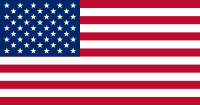 Mark Donohue (1968-1973)
Mark Donohue (1968-1973)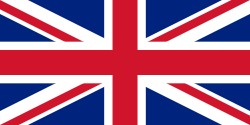 David Hobbs (1971)
David Hobbs (1971) Gary Bettenhausen (1972-1974)
Gary Bettenhausen (1972-1974) Gordon Johncock (1972)
Gordon Johncock (1972) Mike Hiss (1972,1974)
Mike Hiss (1972,1974) Tom Sneva (1975-1978)
Tom Sneva (1975-1978) Bobby Allison (1975)
Bobby Allison (1975) Mario Andretti (1976-1980)
Mario Andretti (1976-1980) Rick Mears (1978-1992)
Rick Mears (1978-1992) Bobby Unser (1979-1981)
Bobby Unser (1979-1981) Bill Alsup (1981)
Bill Alsup (1981) Kevin Cogan (1982)
Kevin Cogan (1982) Al Unser (1983-1989)
Al Unser (1983-1989) Johnny Rutherford (1984)
Johnny Rutherford (1984) Mike Thackwell (1984)
Mike Thackwell (1984) Danny Sullivan (1985-1990)
Danny Sullivan (1985-1990)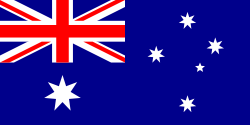 Geoff Brabham (1989) (injury replacement)
Geoff Brabham (1989) (injury replacement)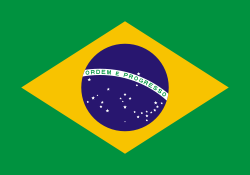 Emerson Fittipaldi (1990-1996)
Emerson Fittipaldi (1990-1996) Paul Tracy (1991-1994, 1996-1997)
Paul Tracy (1991-1994, 1996-1997) Al Unser, Jr. (1994-1999)
Al Unser, Jr. (1994-1999)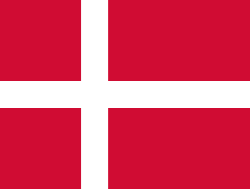 Jan Magnussen (1996) (Paul Tracy injury replacement)
Jan Magnussen (1996) (Paul Tracy injury replacement) André Ribeiro (1998)
André Ribeiro (1998) Alex Barron (1999, 2003 - 2003 as Gil de Ferran injury replacement)
Alex Barron (1999, 2003 - 2003 as Gil de Ferran injury replacement) Gonzalo Rodriguez (1999) (killed at Laguna Seca)
Gonzalo Rodriguez (1999) (killed at Laguna Seca) Tarso Marques (1999) (Al Unser Jr. injury replacement)
Tarso Marques (1999) (Al Unser Jr. injury replacement) Gil de Ferran (2000-2003)
Gil de Ferran (2000-2003) Hélio Castroneves (2000-)
Hélio Castroneves (2000-) Max Papis (2002) (Gil de Ferran injury replacement)
Max Papis (2002) (Gil de Ferran injury replacement) Sam Hornish, Jr. (2004-2007)
Sam Hornish, Jr. (2004-2007) Ryan Briscoe (2008-)
Ryan Briscoe (2008-)
-
- NOTE: This does not include Greg Moore, who in mid-1999 signed a contract with Penske Racing to join the team for the 2000 season. Moore was killed on Lap 10 of the Marlboro 500 at the Auto Club Speedway in the last race of the 1999 season whilst in his last race for Forsythe Championship Racing. Castroneves, who had been driving for Hogan Racing, which shut down after the 1999 season, was tapped to fill that seat.
NASCAR
Penske Racing debuted in 1972 at Riverside International Raceway with Mark Donohue driving a factory-sponsored red-white-blue American Motors Matador. It was dubbed the "flying brick" by many noting its squarish aerodynamics. The car finished 39th after rear end problems. The team ran part-time for a few years, fielding cars for several drivers including Donohue, Dave Marcis, Donnie Allison, and Bobby Allison. The team went full time with Bobby Allison in 1976 with a new, more aerodynamic fastback coupe, finishing 4th in the points. In 1980, the team fielded two races for Rusty Wallace, finishing 2nd in his first race. The team didn't run for eleven years, returning in 1991 with Wallace at the wheel again. Early in 2008, Roger Penske and Penske Racing won 2008 Daytona 500, first to get a restrictor plate win and a 1-2 finish.
Car #2 History
The #2 team hasn't seen many changes since its debut in the 1991 Daytona 500, where it finished 27th after a crash late in the race. 1989 Winston Cup Champion Rusty Wallace drove the car from 1991-2005, with some form of Miller Beer as primary sponsor of the #2. Wallace took over the car in 1991 when his Blue Max Racing team suspended operations. The team performed impressively in its first go, winning twice and finishing 10th in points. 1992 was just decent for Wallace, with him winning once and finishing 13th in points. That's when things turned around for the Wallace and Penske, winning 25 races over the next 4 years, despite never winning the championship. The team switched from Pontiac Grand Prixs to Ford Thunderbirds in 1994. The season finale at Atlanta Motor Speedway and the entire 1996 season saw a small change when the popular Miller Genuine Draft paint scheme was replaced with a red, blue and yellow splashed scheme that advertised the Miller brand. After winning 5 races that season, Wallace donned the blue and white colors of Miller Lite in 1997. After winning one race a piece over the next 3 years, Wallace put together 4 wins in 2000, and won 9 Bud Pole Awards, the highest total of his career. 2002 was a disappointment however, as he failed to win a race, marking the first year since 1985 that he did not visit Victory Lane. After that year, the team switched manufacturers from Ford to Dodge. In 2004, Wallace announced the 2005 season would be his last in NASCAR Nextel Cup, citing his son's racing career and wanting to concentrate on his Busch Series for the departure. Rusty would finish the 2005 season in 8th place. In 2005, Penske announced that 2004 Nextel Cup champion Kurt Busch would drive the car in 2006, following a long dispute Roush Fenway Racing.

Car #12 History
The first #12 team for Penske was not always owned by the team. Originally the car was owned by German businessman Michael Kranefuss. The team debuted in 1994 at Michigan as the #07 Ford driven by Robby Gordon. The car started and finished 38th after Gordon crashed on lap 70. After another start with Geoff Brabham at the Brickyard 400, the team went full time in 1995 with John Andretti, a second-year driver. The car became #37 and was sponsored by Kmart and Little Caesars. Andretti won the pole at the Southern 500 and finished 18th in the points. The team struggled in 1996. Before the season ended, Kranefuss decided change was needed, and replaced Andretti with the relatively unknown Jeremy Mayfield.
The team improved to be 13th in the points in 1997, but it was obvious the team wouldn't succeed if it only fielded one team. In 1998, Kranefuss announced his team would merge with Penske Racing, and would also change to the #12 with Mobil Oil sponsoring the car. The move turned out to be a success, and Mayfield became the next big star. He won the pole at Texas, and at one point in the season, found himself in the points lead. At the Pocono 500 in June, he won his first Winston Cup series race. Mayfield's breakout year in Winston Cup ended with a 7th place finish in the points. Mayfield struggled in 1999, as he did not win and dropped 4 spots in the points. In 2000, he won the Pocono 500 and California 500. Midway through the season, Kranefuss sold his share of the team to Penske. Mayfield then suffered a concussion while practicing for the Brickyard 400. He missed two races recuperating from his injury and finished 24th in points. In 2001, Mayfield posted seven top-10 finishes, but was fired following the race at Kansas. Rusty Wallace's little brother Mike took over, and came close to winning at Phoenix before settling for second place. Surprisingly, Penske announced the #12 team would close after the season, and the owner's point would be transferred to his new team.
The #12 team originally began running in the ARCA Re/Max Series in 2000 as the #27 Ford sponsored by Alltel and driven by Ryan Newman. Later in the year, the team made its Winston Cup debut with Newman at Phoenix, finishing 41st due to engine failure. In 2001, now driving the #02 Ford, Newman split time between ARCA, the NASCAR Busch Series, and the NASCAR Winston Cup Series. He drove in 15 Busch races and won at Michigan. In the Cup Series, he participated in 7 events, and almost won The Winston Open before his engine expired in the closing laps. He put together two top-five finishes, which included a second place finish at Darlington, and a pole in his abbreviated schedule. Newman made the jump to Cup full time in 2002 in the #12 Alltel Ford, competing in a strong battle against Jimmie Johnson for NASCAR Rookie of the Year honors. Newman won The Winston, and the fall event at New Hampshire, as well as six poles. Although he didn't win as many races as Johnson and finished behind him in the points, he was still able to win NASCAR Rookie of the Year. After the switch to Dodge in 2003, he won 8 races, 11 poles, and finished 6th in points.
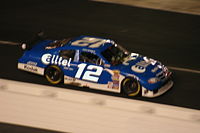
In 2004, Newman won twice, earned 9 pole positions, and finished seventh in points. Newman finished 2005 with 8 pole positions, but only one win. He qualified for the Chase for the Cup for a second year in a row and ended up sixth in the final standings. He failed to win a win race and missed the Chase in both 2006 and 2007. However he found himself back in the winners circle early in 2008, taking victory in the 50th running of the Daytona 500 to open the season and to claim Penske's first Daytona 500 win.
Car #77 history
- See also: Jasper Motorsports
The #77 car began running in 2004 after Penske merged with Jasper Motorsports. Brendan Gaughan was hired as the driver, with Kodak sponsoring. Gaughan had four top-ten finishes and finished 28th in points in his rookie year. He was immediately replaced by Travis Kvapil, who had two top-tens but finished 33rd in points. The #77 team shut down for the next two years due to a lack of sponsorship. In 2007, Sam Hornish, Jr. began driving the #06 in Cup, and after qualifying for two races, it was announced that he would drive the #77 full-time in 2008 with Mobil 1 sponsoring.
Nationwide Series
Penske Racing made their Busch Series debut in 2005, in the #39 Alltel/Mobil Oil Dodge driven by Ryan Newman. He ran only 9 of 25 races, but won 6 times. In 2006, Newman and Kurt Busch shared the ride. Busch won twice and Newman's best finish was 2nd. Hornish began racing the #39 in the last two races of the year, crashing out of both races.
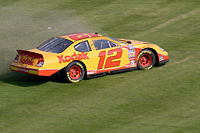
In 2007, the team began running the #12 with Hornish, Busch, and Newman splitting the car. Newman and Busch had a best finish of third. The team will return on limited basis again with Hornish driving most of the races.
Trans-Am Series
Penske first fielded a Blue Sunoco 1967 Camaro driven by Mark Donohue in this series designed for Pony cars like the Ford Mustang. Later they [3]switched to a red/white/blue American Motors backed 1970 AMC Javelin, and later the restyled 1971 AMC Javelin AMX which had an aerodynamic tail spoiler and other features suggested by Donohue. The Javelin took the series championship in 1971, 1972, and 1973.
CanAm Racing
From 1972 to 1974, Penske was Porsche's official partner in the CanAm-Series. In late 1971, Penske and Mark Donohue helped to develop the tubocharged version of the Porsche 917. George Follmer won the series in 1972, and Donohue dominated CanAm in 1973 with the ultimate evolution of the 917, the 917/30. The rules were changed for 1974, and Penske raced only once this year.

Endurance Racing
A Lola T70 Mk IIIb entered by Penske was the surprise winner of the 1969 24 Hours of Daytona.
During the 1970 season the competition between the 5-liter sportscars of Porsche and Ferrari turned to the advantage of the Porsche 917. In 1971, Ferrari decided to give up any official effort with the 5-liter Ferrari 512. In order to prepare the 1972 season, the new works prototype Ferrari 312PB was presented and engaged by the factory in several races.
Roger Penske bought a used 512 M chassis that was totally dismantled and rebuilt. The car was specially tuned for long races receiving many unique features, among them were a large rear wing and an aviation inspired quick refueling system. The engine was tuned by CanAm V8 specialist Traco, and was probably able to deliver more than 600 hp (450 kW). As of today it's unknown to what extend Penske's initiative was backed by Ferrari works. This 512M was painted in a blue and yellow livery and was sponsored by Sunoco and the Californian Ferrari dealer Kirk F. White. The car made the pole position for the 1971 24 Hours of Daytona and finished second despite an accident. For the 12 Hours of Sebring the "Sunoco" made the pole again but finished the race at the sixth position after making contact with Pedro Rodrigez's 917. Despite this misfortune the car had proved to be a serious opponent for the 917. Not only this car was the fastest on track in Daytona and Sebring but it was also the car that had the shortest refueling time.
The presence of the 512 M "Sunoco" forced Porsche to pursue his effort of research and development on the 917: The 917K short tail was modified, and the 917 LH aerodynamics received further improvements. New Magnesium chassis were developed. An entirely new car, the 917/20 was built as test-bed for future CanAm parts and aerodynamic "low-drag" concepts.
In Le Mans the "Sunoco" Ferrari was unable to break the 200 mph (320 km/h) barrier on the straight while the Porsche 917 LH were lightning quick at speeds of over 240 mph (380 km/h). Mark Donohue qualified fourth anyway, which was obviously the result of an aerodynamic configuration that favored downforce over drag, which helped in the twistier sections. The car had not much luck in the race, though.
American Le Mans Series
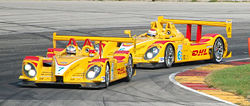
In April 2005, it was announced that Porsche would build a Automobile Club de l'Ouest (ACO) sanctioned LMP2 Class Prototype that would be entered by Penske Racing in the American Le Mans Series. The Porsche RS Spyder made it's successful debut at the ALMS season final race at Laguna Seca. The "Porsche Junioren" factory drivers Sascha Maassen and Lucas Luhr finished 1st in LMP2 Class and 5th Overall in the 4 Hour Endurance Race.
In 2006, Penske Motorsports fielded two LMP2 Porsche RS Spyder in the American Le Mans Series, but did not run the 2006 24 Hours of Le Mans in June. The Penske cars combined to win seven class victories and the overall win at Mid-Ohio. Penske Racine won the LMP2 team championship. Drivers Sascha Maassen and Lucas Luhr tied for first place in the driver's championship, while Timo Bernhard finished fifth, Romain Dumas finished sixth, and Emmanuel Collard finished tenth.
2006 Team Lineup:
- LMP2 Porsche RS Spyder #6: Sascha Maassen, Lucas Luhr (plus Emmanuel Collard in Long Distance events)
- LMP2 Porsche RS Spyder #7: Timo Bernhard, Romain Dumas (plus Patrick Long in Long Distance events)
In 2007, Penske Motorsports fielded two LMP2 Porsche RS Spyder Evo in the American Le Mans Series. Penske Motorsports for 2nd year in row did not compete in 2007 24 Hours of Le Mans in June. Penske's two cars combined for eleven class victories and eight overall victories during the twelve race season. Penske won the LMP2 team championship, and team drivers Romain Dumas and Timo Bernhard finished tied for first in the LMP2 driver's championship, while Sascha Maassen and Ryan Briscoe tied for third place.
Penske started out their 2008 season with an overall win in the 12 Hours of Sebring. This was Porsche's first overall win in the race since 1988 in a Porsche 962.
2008 Team Lineup:
- LMP2 Porsche RS Spyder #6: Sascha Maassen, Patrick Long
- LMP2 Porsche RS Spyder #7: Romain Dumas, Timo Bernhard (plus Emmanuel Collard in long distance events)
Formula One

Penske entered the Formula One World Championship from 1974 to 1976. Back in 1971, Penske had sponsored the second McLaren entry in the 1971 Canadian and US GP, entering Mark Donohue, who took the car to a podium finish. The team returned three years later, in the 1974 Canadian GP, with their own chassis, the PC1, a standard tub built around a Cosworth DFV engine and a Hewland gearbox. Donohue took the car to 12th place on its debut. In 1975, Roger Penske mounted a full season attack with the PC1, Donohue managing to score a fifth place in the Swedish GP. However, the car was retired after the French GP and Penske entered a March 751 for the next three races, scoring another fifth in the British GP. However, Donohue crashed the car in the Austrian GP at Zeltweg and died later. Penske missed the Italian race, returning only for the US GP, this time back with the PC1 and Northern Irish driver John Watson.
For 1976, Penske signed a sponsorship deal with Citibank and entered a brand new PC3 for Watson. In spite of a fifth place scored at the South African GP at Kyalami, the PC3 was evolved into the PC4, which was much more competitive, allowing Watson to score two podiums in France and Britain. Then, in the Austrian Grand Prix, the team scored their only F1 win, "forcing" John Watson to shave his trademark beard. Still, Roger Penske was tired of Europe and at the end of the year decided to concentrate solely on Indycar racing, selling the remains of his European operations to Günther Schmidt of Germany.
For 1977, the car was entered by Schmidt's ATS (wheels) business, painted in yellow. The ATS-Penske PC4 debuted in the 1977 United States Grand Prix West with Jean-Pierre Jarier at the wheel, where the Frenchman scored the team's single point of the season. A second PC4 was eventually entered for Hans Heyer and Hans Binder but the team's fortunes sunk and Schmidt quit after the Italian GP, before returning in 1978 with his own chassis. The PC4 ended up in the hands of Interscope Racing, who entered the car in the United States Grand Prix East and the Canadian Grand Prix, driven by American Danny Ongais with no results.
In 1979 Penske designed and built the HR100 for wealthy Mexican 'gentleman driver' Hector Rebaque. The car was entered for the final three races of the season, but either failed either to qualify or to finish in each case.
Complete Formula One World Championship results
(Note: grands prix in bold denote Pole Positions.)
Penske Racing Results
(key)
| Year | Chassis | Engine(s) | Tyres | Drivers | 1 | 2 | 3 | 4 | 5 | 6 | 7 | 8 | 9 | 10 | 11 | 12 | 13 | 14 | 15 | 16 | Points | WCC |
|---|---|---|---|---|---|---|---|---|---|---|---|---|---|---|---|---|---|---|---|---|---|---|
| 1974 | Penske PC1 | Ford V8 | G | ARG | BRA | RSA | ESP | BEL | MON | SWE | NED | FRA | GBR | GER | AUT | ITA | CAN | USA | 0 | NC | ||
| Mark Donohue | 12 | Ret | ||||||||||||||||||||
| 1975 | Penske PC1 March 751 |
Ford V8 | G | ARG | BRA | RSA | ESP | MON | BEL | SWE | NED | FRA | GBR | GER | AUT | ITA | USA | 2 | 12th | |||
| Mark Donohue | 7 | Ret | 8 | Ret | Ret | 11 | 5 | 8 | Ret | 5 | Ret | DNS | ||||||||||
| John Watson | 9 | |||||||||||||||||||||
| 1976 | Penske PC3 Penske PC4 |
Ford V8 | G | BRA | RSA | USW | ESP | BEL | MON | SWE | FRA | GBR | GER | AUT | NED | ITA | CAN | USE | JAP | 20 | 5th | |
| John Watson | Ret | 5 | Ret | Ret | 7 | 10 | Ret | 3 | 3 | 7 | 1 | Ret | 11 | 10 | 6 | Ret |
Results of other Penske cars
(key) (Results in bold indicate pole position; results in italics indicate fastest lap.)
| Year | Entrant | Chassis | Engine(s) | Tyres | Drivers | 1 | 2 | 3 | 4 | 5 | 6 | 7 | 8 | 9 | 10 | 11 | 12 | 13 | 14 | 15 | 16 | 17 |
|---|---|---|---|---|---|---|---|---|---|---|---|---|---|---|---|---|---|---|---|---|---|---|
| 1976 | BRA | RSA | USW | ESP | BEL | MON | SWE | FRA | GBR | GER | AUT | NED | ITA | CAN | USE | JAP | ||||||
| F&S Properties | Penske PC3 | Ford V8 | G | Boy Hayje | Ret | |||||||||||||||||
| 1977 | ARG | BRA | RSA | USW | ESP | MON | BEL | SWE | FRA | GBR | GER | AUT | NED | ITA | USE | CAN | JAP | |||||
| ATS Racing Team | Penske PC4 | Ford V8 | G | Jean-Pierre Jarier | 6 | DNQ | 11 | 11 | 8 | Ret | 9 | Ret | 14 | Ret | Ret | |||||||
| Hans Binder | 12 | 8 | DNQ | |||||||||||||||||||
| Hans Heyer | Ret | |||||||||||||||||||||
| Interscope Racing | Penske PC4 | Ford V8 | G | Danny Ongais | Ret | 7 |
Notes
- ↑ Motorsports Hall of Fame of America and Museum:Roger Penske
- ↑ http://www.walkerracing.com/team/walker.php
- ↑ [1] javelinamx.com
External links
| Penske Racing | |
| Sprint Cup drivers | Kurt Busch (#2) | David Stremme (#12) | Sam Hornish, Jr. (#77) |
| IRL Mobil 1 Team Penske drivers | Hélio Castroneves (#3) | Ryan Briscoe (#6) |
| American Le Mans Series DHL drivers | Sascha Maassen/Emmanuel Collard (#6) | Romain Dumas/Timo Bernhard (#7) |
| Driver development program | Billy Wease |
| Other | Roger Penske |
|
||
|
||
|
|||||||||||||||